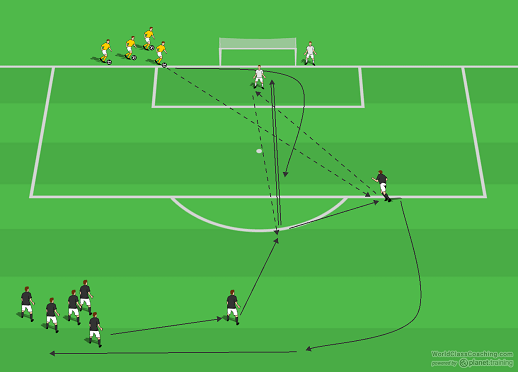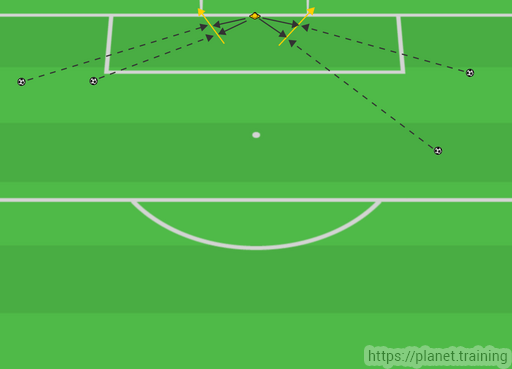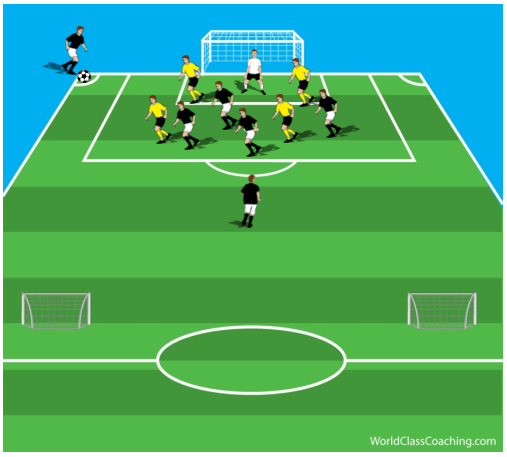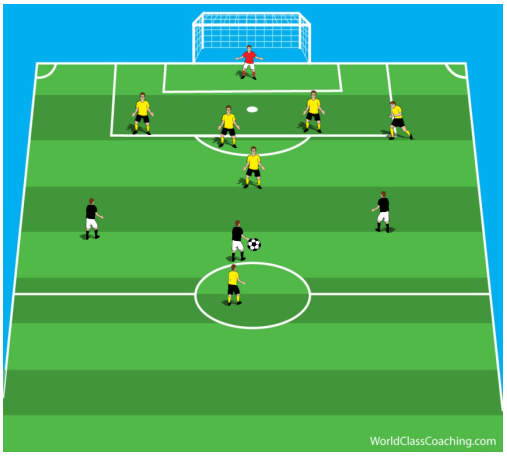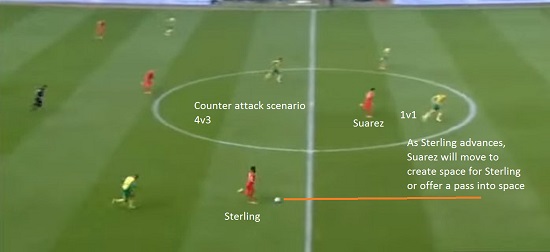By Daniel Severn
This exercise will help your players to develop an understanding of key defensive positioning, delaying an opponent and help to develop their decision making. It can be broken down into a more tactical practice, but I like to play this game with a continuous aspect to increase the intensity. It is also a great way to teach players how to keep focus when tiring in the game.
Set Up
You will need a minimum of 9 players to run this exercise as continuous (you can play this with just 6, but for the best intensity, 12 players is ideal). You begin with 1 Goalkeeper and 2 Defenders placed just inside the penalty area. You now have 3 lines of attackers set up as if they are playing the roles of a striker and the two wingers/wide midfielders. The Striker starts with the ball.
Set up is shown below in Fig 1.

Rules
- 2 minutes on the clock
- The defenders begin with 10 points
- Each goal they concede, they lost 1 point
- Winning pair are the ones with the most points remaining at the end
Directions
The striker begins with the ball centrally. As soon as the striker takes
Continue reading
